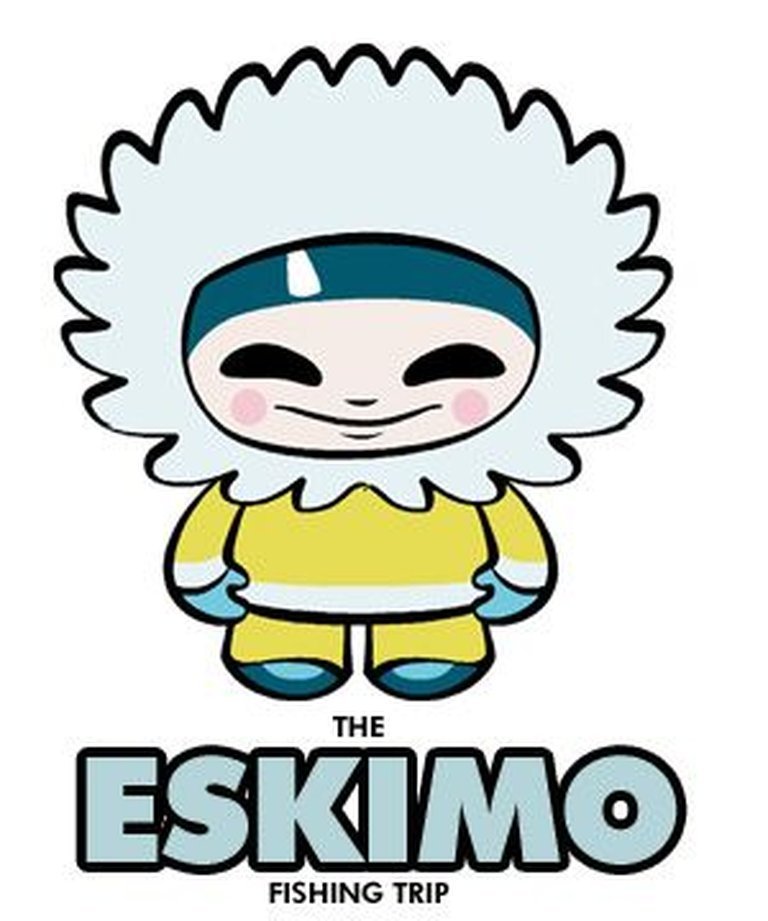- Release Year: 2001
- Platforms: Windows
- Developer: Mikko Mononen
- Genre: Action, Sports
- Perspective: 1st-person
- Game Mode: Single-player
- Gameplay: Arcade

Description
The Eskimo Fishing Trip is a freeware, open-source arcade game where players use a fishing rod to capture aquatic animals swimming in a small pond. The game requires players to time their catches perfectly, lowering the line and bait when the creatures’ mouths are open, and carefully lifting them out of the water.
Guides & Walkthroughs
Reviews & Reception
moppi.inside.org : I think the game was succesfull and I may consider making another one next year.
The Eskimo Fishing Trip: A Hidden Gem in the World of Freeware Games
Introduction
Released in 2001 as a freeware, open-source arcade game, The Eskimo Fishing Trip is a unique and intriguing title that has garnered a dedicated following despite its limited exposure. Developed by Mikko Mononen over a span of four weeks as a Christmas gift for friends and colleagues, this game has evolved into a cult classic. This review aims to dissect the various elements that make The Eskimo Fishing Trip a standout title in the realm of freeware games, examining its development history, gameplay mechanics, narrative, and overall impact.
Development History & Context
The Eskimo Fishing Trip was created by Mikko Mononen, a developer who, at the time, was working on his second game after having written his first program in C. The game was developed over four weeks in spare time, without beta testers, which, as Mononen himself acknowledged, resulted in a game that was “a bit too hard.” The constraints of time and resources are evident in the final product, yet these limitations also contributed to the game’s charm. The use of libraries such as IJL Intel JPEG library for image loading and FMOD for music and sound effects playback underscores the resourcefulness and technical skill of the developer.
The gaming landscape in 2001 was dominated by big-budget titles and franchises, leaving a niche for innovative indie and freeware games. The Eskimo Fishing Trip filled this niche with its original gameplay concept inspired by a mechanical toy from Mononen’s childhood. Despite the technical constraints, the game managed to carve out its own space, showcasing what could be achieved with creativity and limited resources.
Narrative & Thematic Deep Dive
The narrative of The Eskimo Fishing Trip is subtle, woven into the fabric of its gameplay and environmental changes across levels. As players progress, they are treated to different environments and a variety of aquatic creatures, from fish to crocodiles. This progression not only adds visual variety but also increases the game’s difficulty, introducing a thematic element of adapting to changing conditions.
Mononen’s decision to use the term “Eskimo” for the game’s title, despite its potentially negative connotations in some cultures, was based on its acceptance in Finland and its use in certain trademarks. The character design was inspired by Finnish products, further grounding the game in a specific cultural context. This aspect adds a layer of depth to the game, highlighting the developer’s intentions and the cultural nuances that influenced the game’s creation.
Gameplay Mechanics & Systems
The gameplay of The Eskimo Fishing Trip revolves around using a fishing rod to capture aquatic animals swimming in a circular pond. The mechanics are straightforward yet challenging: players must time their actions to lower the bait into the open mouths of the creatures and then carefully lift them out of the water. The game demands precision and patience, with the added complexity of managing a limited bait supply.
The control scheme, utilizing mouse buttons to pull and push the line, is simple but effective. However, the lack of a reeling mechanism and the sometimes abrupt movement of the bait can lead to frustration. Suggestions by Mononen for improvement, such as introducing special equipment or enhancing the simulation for the bait and fishing line, indicate areas where the gameplay could have been further enriched.
World-Building, Art & Sound
The game’s world is visually represented by a series of ponds, each with its unique environment and inhabitants. The art style is simplistic, yet the different settings, from daylight to nighttime scenes, and the variety of creatures, contribute to a visually engaging experience. The lack of detailed graphics was partly due to the technical constraints and the time available for development.
The sound design, while not sophisticated, effectively complements the gameplay. Mononen’s self-described method of creating sound effects by manipulating existing sounds resulted in an ambient, if somewhat rudimentary, audio experience. Enhancements such as a particle system for visual feedback when the bait is damaged could have significantly improved the overall sensory experience.
Reception & Legacy
Upon its release, The Eskimo Fishing Trip did not receive widespread critical acclaim, likely due to its freeware status and limited distribution channels. However, it has since developed a loyal following and is appreciated for its originality and the challenges it presents.
The game’s influence can be seen in later fishing games that incorporate similar timing-based mechanics. Moreover, The Eskimo Fishing Trip stands as a testament to the potential of freeware and open-source games to innovate and provide unique gaming experiences outside the mainstream.
Conclusion
The Eskimo Fishing Trip is a remarkable achievement considering its development constraints and the context of its release. While it may lack the polish of commercial titles, its creativity, challenge, and the evident passion of its developer make it a memorable experience. As a piece of gaming history, it highlights the importance of indie and freeware titles in pushing the boundaries of game design and distribution. For those interested in exploring beyond mainstream gaming, The Eskimo Fishing Trip is a must-play, offering a unique blend of challenge and simplicity that continues to captivate players to this day.